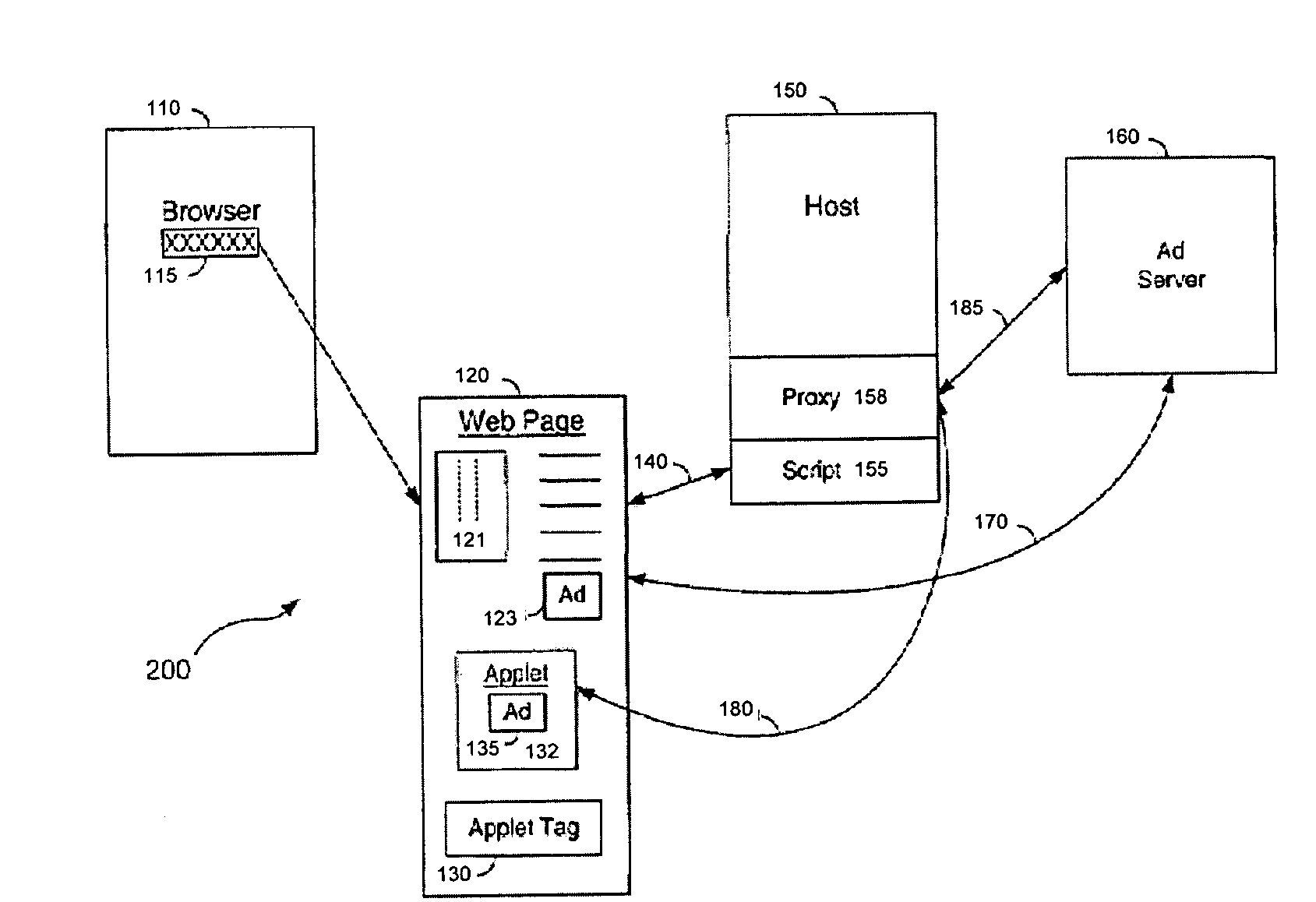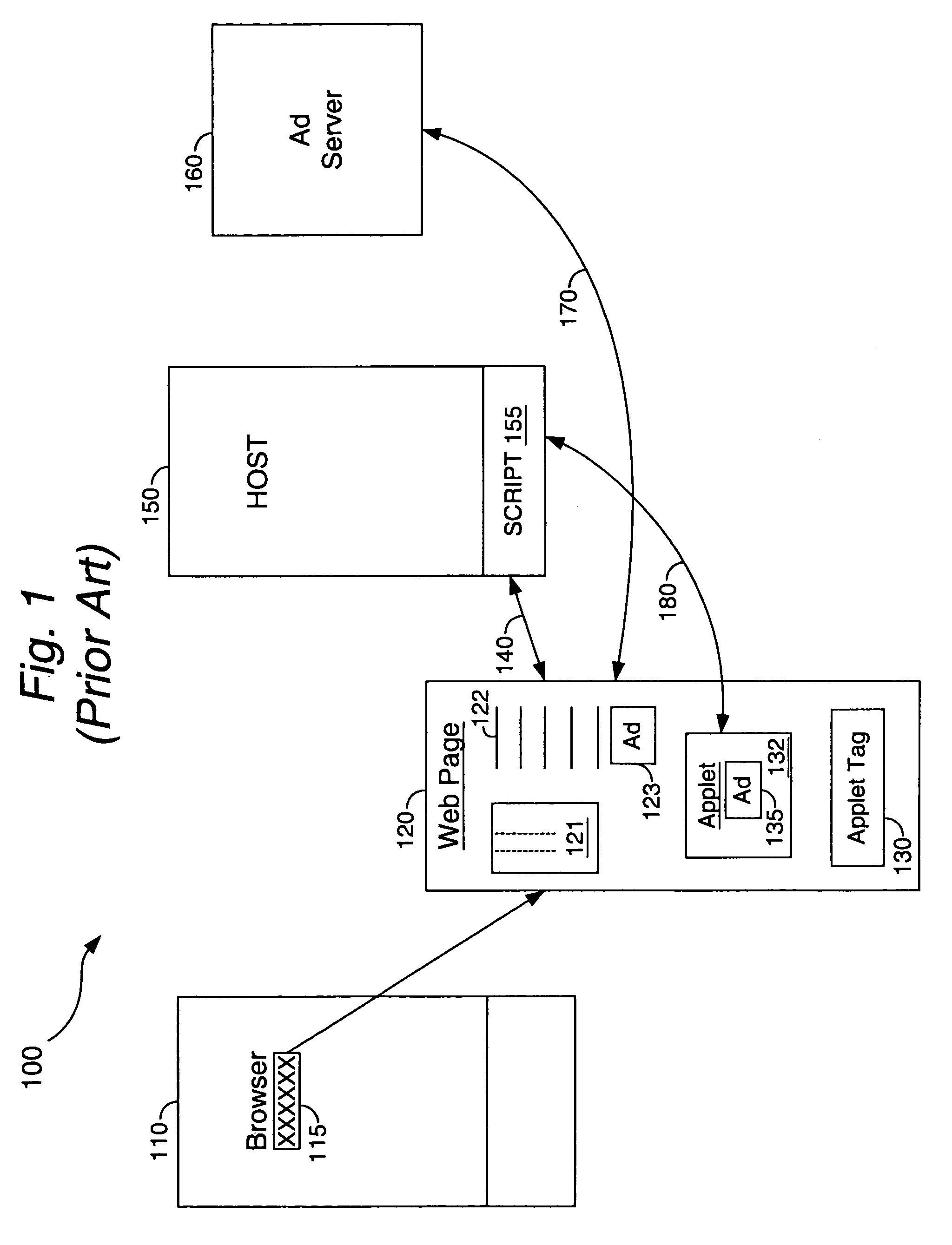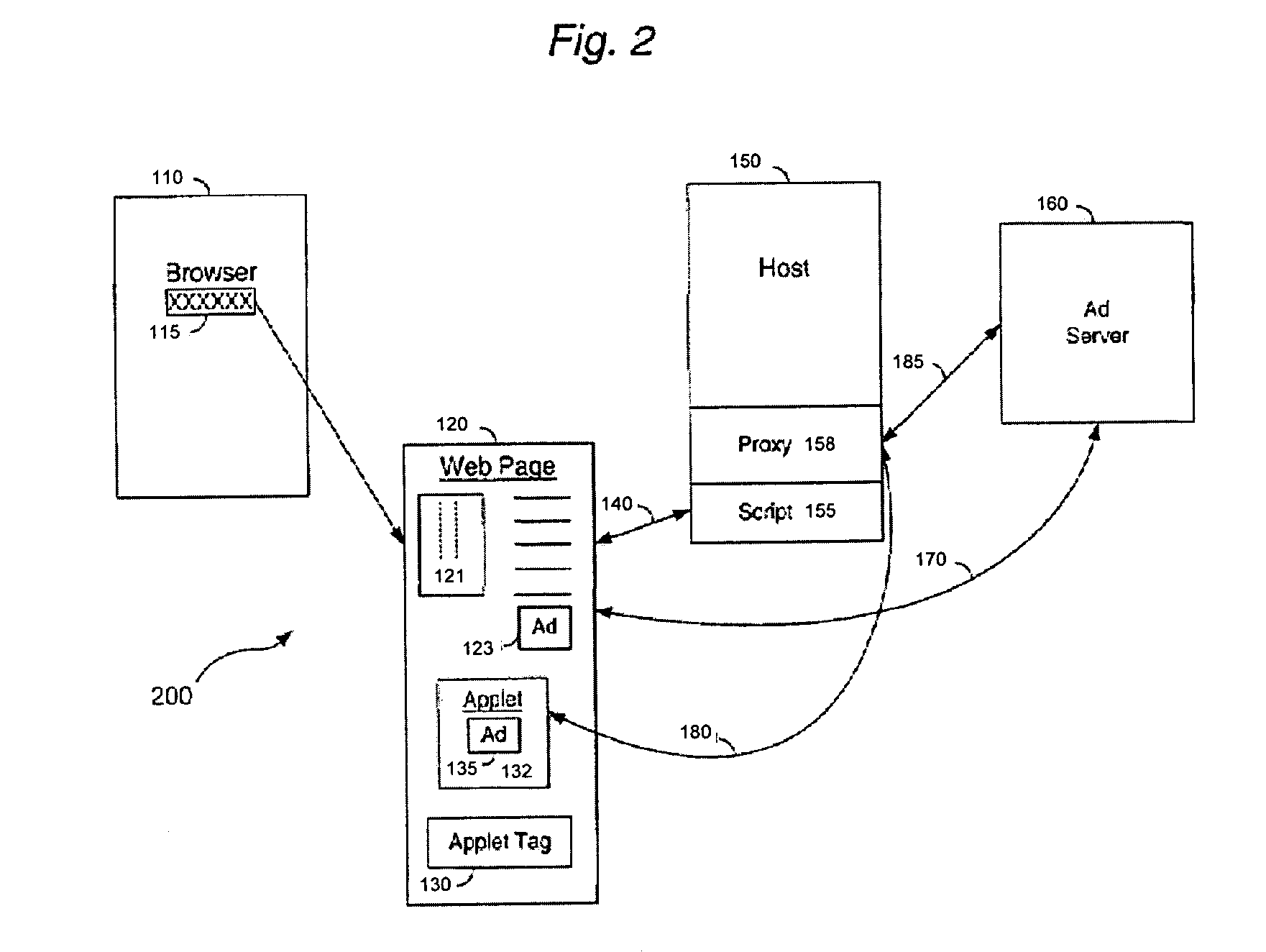System and method for implementing click-through for browser executed software including ad proxy and proxy cookie caching
a technology of browser executed software and click-through, which is applied in the field of system and method for implementing click-through for browser executed software including ad proxy and proxy cookie caching, can solve the problems of applets not being able to read or write from computing systems other than the host, applets have some limitations, and their use on an even greater scal
- Summary
- Abstract
- Description
- Claims
- Application Information
AI Technical Summary
Benefits of technology
Problems solved by technology
Method used
Image
Examples
first embodiment
[0095]a second aspect of the present invention remedies this limitation through the system illustrated in FIG. 5a. Again, except where specifically noted, the components of system 500 identified by the same numerical identifiers as those in system 100 are the same. The primary difference introduced by the Applicant is the use of proxy 558 running on host 550, and an improved applet 532′, which communicate with each other to build an additional frame 537 readable by browser 510, and in which frame a substitute or proxy cookie 536′ can be planted so as to be read by browser 110. Thus, in this embodiment, proxy 558 is also used for the benefits and advantages noted earlier.
[0096]The present scheme is best illustrated with reference to the flow diagram provided in FIG. 6a. When an ad 535 is obtained by proxy 558 at step 605, a cookie 536 associated with Ad Server 560 is also passed along as well. Ad 535 is downloaded to applet 532′ at step 610, but cookie 536 is not planted at this time...
second embodiment
[0101]In this second embodiment, proxy 558 running on host 550 includes capabilities for directly caching cookies 536 in a cookie / link cache lookup table 556. During a normal ad retrieval operation, therefore, proxy 558 compiles a complete set of appropriate links and calls and stores them in table 556 to ensure that a later click-through of the ad presented within the applet can be satisfied by finding the exact banner match for such ad across link 571.
[0102]This second embodiment is best illustrated with reference to the flow diagram provided in FIG. 6b. When an ad 535 is obtained by proxy 558 at step 605, a cookie 136 associated with Ad Server 560 is also cached as well in cookie / link table 556, which is indexed according to an ad number. As before, Ad 535 is downloaded to applet 532′ at step 610, but cookie 536 is not planted at this time, since it would be of no practical use within the applet. At step 620 when a click-through is requested by the user for Ad 535 within applet 5...
PUM
 Login to View More
Login to View More Abstract
Description
Claims
Application Information
 Login to View More
Login to View More - R&D
- Intellectual Property
- Life Sciences
- Materials
- Tech Scout
- Unparalleled Data Quality
- Higher Quality Content
- 60% Fewer Hallucinations
Browse by: Latest US Patents, China's latest patents, Technical Efficacy Thesaurus, Application Domain, Technology Topic, Popular Technical Reports.
© 2025 PatSnap. All rights reserved.Legal|Privacy policy|Modern Slavery Act Transparency Statement|Sitemap|About US| Contact US: help@patsnap.com



